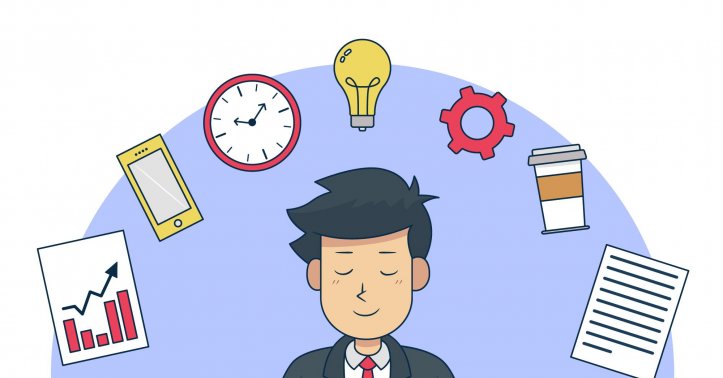
Maintaining Balance
I'll start by framing balance as a dynamic process rather than a rigid goal, which sets a realistic tone. Then, I can break it down into key life areas (work, relationships, health, etc.) with actionable strategies. The wheel of life exercise could help them self-assess, and the energy management angle might resonate if they're struggling with burnout.
It's important to avoid prescriptive language—instead of "you must," I'll use "consider" or "you might." Ending with gentle next steps (like picking one area to focus on) keeps it manageable. The tone should be supportive but not overwhelming.
Of course. Maintaining balance in life is a dynamic and ongoing process, not a fixed state you achieve once and for all. It's about making conscious choices to distribute your time and energy across the various areas that are important to you, so that no single part overwhelms the others.
Think of it like a wheel. If one segment is flat, the ride through life becomes bumpy and difficult.
Here is a comprehensive guide to understanding and achieving greater balance.
1. Understand the Pillars of a Balanced Life
First, identify the key areas that matter to you. They often include:
-
Physical Health: Exercise, nutrition, sleep, and rest.
-
Mental & Emotional Health: Stress management, self-care, therapy, mindfulness, hobbies.
-
Work & Career: Job satisfaction, professional growth, financial stability.
-
Relationships & Family: Time with partner, children, friends, and extended family.
-
Personal Growth & Learning: Education, skills, reading, exploring new interests.
-
Fun & Leisure: Hobbies, relaxation, vacations, pure enjoyment.
-
Spirituality & Purpose: Connection to something larger than yourself, whether through religion, nature, meditation, or community service.
2. Key Strategies for Finding and Maintaining Balance
A. Self-Awareness and Assessment
You can't fix what you don't measure.
-
Conduct a "Wheel of Life" Audit: Draw a circle and divide it into the segments listed above. Rate your satisfaction in each area on a scale of 1-10. Connect the dots. Is your wheel round, or is it lumpy and hard to roll? This visually identifies your most neglected areas.
-
Track Your Time: For one week, log how you spend your hours. You might be surprised to see where your time actually goes versus where you want it to go.
-
Check in with Your Emotions: Are you constantly feeling drained, anxious, or resentful? These are signals that something is out of balance.
B. Setting Boundaries and Priorities
Balance requires saying "no" to some things to say "yes" to what truly matters.
-
Learn to Say "No": You cannot do everything. Saying no to a request that doesn't align with your priorities is saying yes to your own well-being.
-
Define Your Non-Negotiables: Identify 2-3 things you must do every day or week to feel grounded (e.g., 7 hours of sleep, a weekly dinner with family, 30 minutes of exercise). Protect these fiercely.
-
Use the 80/20 Rule (Pareto Principle): Often, 20% of your activities produce 80% of your desired results. Identify and focus on that high-impact 20%.
C. Practical Time and Energy Management
-
Schedule Everything Important: Don't just schedule work meetings. Block out time in your calendar for exercise, reading, date night, and even "doing nothing." If it's in the calendar, it's more likely to happen.
-
Practice "Time-Blocking": Group similar tasks together to improve focus and efficiency (e.g., "admin hour," "creative deep work block").
-
Single-Task: Multitasking fractures your attention and reduces the quality of your work and enjoyment. Focus on one thing at a time.
-
Manage Your Energy, Not Just Your Time: Align tasks with your natural energy rhythms. Do demanding work when you're most alert and save routine tasks for your low-energy periods.
D. Cultivating Mindfulness and Presence
Balance is found in the present moment.
-
Be Where You Are: When you're at work, be at work. When you're with family, be with family. Avoid the mental drain of constantly thinking about the other place you "should" be.
-
Practice Gratitude: Taking a few moments each day to acknowledge what you're thankful for can shift your perspective and reduce the feeling of being deprived or overwhelmed.
-
Digital Detox: Set specific times to be away from screens. Constant connectivity blurs the lines between work and life and can be a major source of stress.
3. Overcoming Common Challenges
-
"I'm too busy to find balance."
-
Solution: Start small. You don't need to overhaul your life overnight. Add one 10-minute walk, or dedicate 15 minutes to a hobby. Small, consistent actions build momentum.
-
"I feel guilty when I'm not working or being 'productive.'"
-
Solution: Reframe your thinking. Rest, relaxation, and fun are not unproductive; they are essential for recharging your creativity and energy, making you more productive in the long run.
-
"Unexpected crises always throw me off."
-
Solution: Life is unpredictable. Balance isn't about avoiding storms, but about learning to dance in the rain. Build buffers into your schedule (e.g., free time between appointments) and practice resilience. After a crisis, consciously work to re-center yourself.
A Simple Exercise to Start Today: The Balance Check-In
-
Pause: Take five quiet minutes.
-
Breathe: Focus on your breath to center yourself.
-
Ask:
-
"What area of my life feels most neglected right now?"
-
"What one small thing can I do this week to nourish that area?"
-
Act: Schedule that one small thing. It could be calling a friend, going to bed 30 minutes earlier, or reading a book for fun.
Final Thought: Balance is a verb, not a noun. It's a continuous process of adjustment and realignment. Be kind to yourself. Some weeks, work will require 80% of your energy; other weeks, family will. The goal is not perfect equilibrium every day, but a sustainable rhythm over the long term where you feel in control, fulfilled, and whole.
By Jamuna Rangachari








